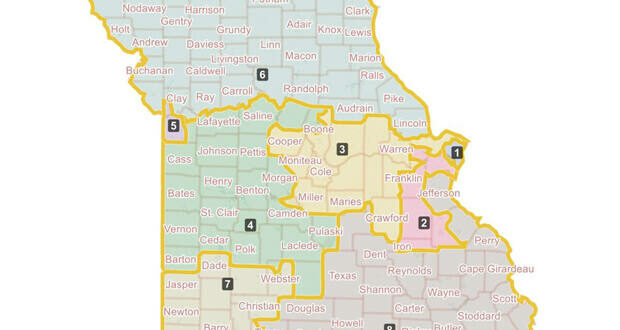After months of contentious debate, the Missouri Senate on Thursday approved a map for redistricting the state’s eight congressional districts. If the House passes the bill, it will go to Gov. Mike Parson to sign into law.
Analysts expect the plan to preserve the existing breakdown of six Republican and two Democratic seats. The seven-member conservative caucus tried to win support for a map likely to give Republicans another seat, the “Jefferson City News-Tribune” reported. In the end, members of the caucus had to accept that they had achieved only minor goals — keeping the state’s military bases in the same district and adding a few reliable GOP votes to the 2nd District.
“We are disappointed that we couldn’t deliver on a 7-1 map we have been talking about since before the session started,” said Sen. Bill Eigel, R-Weldon Springs.
Senate passage means it is possible for the map to take effect before filing for this year’s August primary closes at 5 p.m. next Tuesday. The Senate voted 22-10 to approve the plan, offered to replace the House-passed version by Sen. Andrew Koenig, R-Manchester, then voted 30-2 to make the bill effective with Parson’s signature.
READ: Proposed Missouri legislation would ban business with Russia due to invasion
In the vote on the bill, 17 Republicans and five Democrats voted in favor and five Republicans and five Democrats were opposed. The vote Thursday came more than two months after the Missouri House passed its version of the proposal. The Senate map isn’t a slam dunk when the House reconvenes Monday, said Rep. Dan Shaul, an Imperial Republican and sponsor of the House plan. It will be up to the Republican caucus to decide whether to seek a vote or ask the Senate for changes, he said.
The goal of a map is to produce eight districts with populations as close as possible to the ideal of 769,364. The plan must protect minority representation, and districts are supposed to be as compact and contiguous as possible.
–Alan Goforth | Metro Voice
 Metro Voice News Celebrating Faith, Family & Community
Metro Voice News Celebrating Faith, Family & Community









